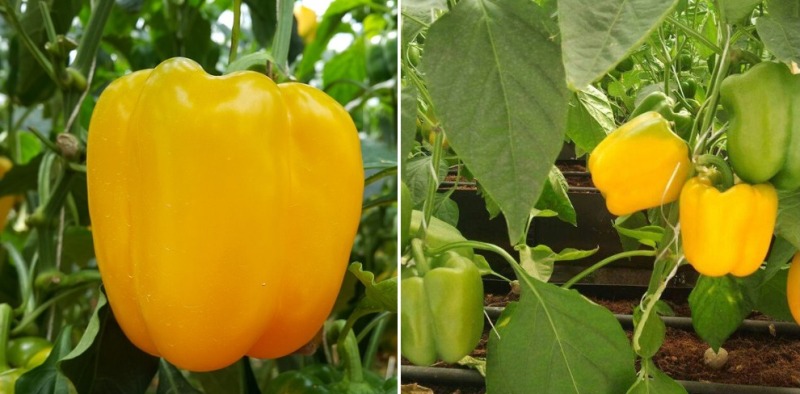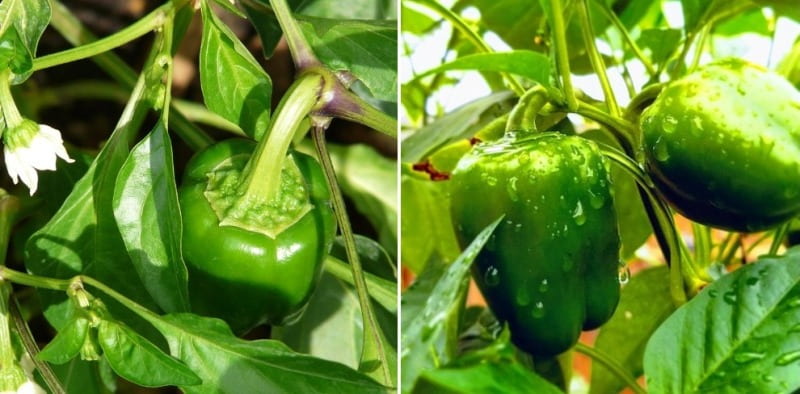Hi farmers, today we came up with a topic of Capsicum farming in polyhouse. Capsicum is also known as sweet pepper, green pepper or Hoho. Capsicum is a perennial herbaceous plant which belongs to the family of Solanaceae. The crop can be grown in a greenhouse, polyhouse or an open field.
A step by step guide to capsicum farming in polyhouse for maximum profit
Capsicum is a good source of vitamin A and vitamin C and commonly used as a vegetable stew or salads. This crop is cold season crop, but Capsicum cultivated through the year using polyhouse.

Capsicum varieties:
Capsicum varieties are primarily recognized by the mature color which can be green, red or yellow. Others may contain orange, black, cream, brown and lime-colored varieties.
There are several varieties of Capsicum cultivated in India. The important varieties are California Wonder, Chinese Giant, World Beater, Yolo Wonder Bharat, Arka Mohlnl, Arka Gaurav, Arka Basant, Early Giant, Bullnose, Ruby King, etc.
Requirements for Capsicum farming in polyhouse:
It thrives in polyhouse and is easy to grow by simply following these steps;
Polyhouse is one kind of greenhouse where polyethylene is used as the cover. In India, polyhouse farming is the popular greenhouse technology for its low cost of construction. Poly houses are mostly naturally ventilated climate controlled.
Soil requirements for Capsicum farming in polyhouse:
- Capsicums can be grown on a wide range of soil types; they are well-drained to a depth of at least 400 mm.
- Sandy-loam to loam soils are preferred, as they tend to warm up more rapidly than heavier soils, and yet have a good water holding capacity.
- It can tolerate a wide range of climatic conditions from warm temperate to tropical, including irrigated dry hot areas.
- It is sensitive to frost and the optimum temperatures for proper growth are 15 to 25ºC.
- Capsicum can grow on moist well-drained loamy or heavy cracking clay soils with an optimum pH level of 6.0 to 6.5
Growing beds and soil sterilization for Capsicum farming in polyhouse:
The soil inside the polyhouse is loosened to a fine tilth and then beds are produced at 75cm width with 45cm height and leaving 45cm working space between two beds. Before bed creation, well-decomposed organic manure or Vermicompost along with sand sawdust is added to soil @ 10kg per m2. The beds are drenched with 4% formaldehyde and covered with polythene sheet for 3 to 5 days. Afterward, the polythene sheet is removed; the beds are raked repeatedly every day to remove the trapped formaldehyde fumes completely before planting.
The seed rate of Capsicum:
In polyhouse, the seed rate of Capsicum is 200-300 gm for one acre of land.
Capsicum seed treatment:
Soak the seeds in Thiram or Captan, Ceresin, etc. @2gm/kg of seeds before sowing to prevent the plants from seed-borne diseases.
Transplanting and seedling for Capsicum farming in polyhouse:
The bed must be irrigated with water and kept wet at the time of plantation. Capsicum seedling must be sown in two rows on the raised beds. Plantation of capsicum can be done on a raised bed with plastic mulch to save water and checked the growths of weeds. Afterward, drip irrigation is started daily to supply 2 to 3 liters of water per square meter per day depending on the local weather condition. Capsicum plants are trained to retain 2 to 4 stems per plant.
You should not miss the Sabja Seeds Cultivation Income.
The seedling having attained 4-5 leaves should be transplanted. The beds should be irrigated before the lifting of seedlings. The seedlings are transplanted in rows in the evening time or during the cloudy day followed by irrigation. Usually, 50 to 60 days old seedlings are used for transplanting.
The seedlings are planted at a spacing of 60 cm between rows as paired row system by keeping 30 cm between plants on raised beds. Before planting, the seedlings are sprayed with Imidacloprid to prevent any sucking pest infestation in the polyhouse system.
Seedlings are ready for transplanting after 4-6 weeks when they have a height of 10 to 15cm. One day before seed transplanting, harden the Capsicum seedlings by reducing the frequency of watering gradually. Plant Capsicum seedlings at a spacing of 60cm by 30cm and using drip lines, make holes next to the plant.
Manures and Fertilizers
About 50 to 80 cartloads of farmyard manure FYM, 30 to 55 kg of nitrogen in the form of ammonium sulfate or urea, 50 to 110 kg of phosphorus in the form of superphosphate and 75 to 100 kg of potash per hectare must be given depending upon the fertility status of the soil. The complete dose of FYM should be applied in the soil at the time of first plowing. Potassium and phosphate fertilizers must be mixed in the plant rows just before transplanting. The nitrogenous fertilizer is applied two and half a month after transplanting.
Water requirement of Capsicum farming in polyhouse:
- To reduce the pH level of water, add the acid in the water tank, and then use water for irrigation and sprinkling.
- Immediately after Capsicum plantation, irrigation required to start the first shower is required to use after some days drip irrigation use this will help for uniform root development of a plant,
- Generally, a dripper per plant is required. Depending on the season, drip irrigation is given to provide 2 to 4 liters of water per square meter.
- Inspect the soil column for irrigation and visually verify the soil moisture content. After this, find out the amount of irrigation required.
- Apply water to the edges of the bed frequently by using the shower to reduce the loss of evaporator. For this purpose, provision for water outlet inside the polyhouse construction must be made. Always pour the Capsicum plant water from noon.
- Relative humidity of air must not be more than 90 – 92 percent because it is inclined to disturb the fruit. Always use fresh water for irrigation and do not store water for 4 to 5 days.
Weed control
For a good yield of Capsicum crop, weeding must be done at proper intervals. Earthing up after 2 to 3 weeks of transplanting will help to remove weeds from the fields. First weeding is done after 30 days of seed transplanting then second weeding is done after 60 days of transplanting.
You may be interested in Pumpkin Farming in Polyhouse.

Pests and diseases in Capsicum farming:
Aphids: Nymph and adult suck sap from the Capsicum plant leaves, resulting in the decreased yield and plant growth.
Thrips: Thrips cause upper curling of leaves, sucks, and sap from leaf due to which decrease in the size of the plants, production of fruits reduce and reduce the market value of production. Thrips generally attack the flowers. Scout the field daily to spot them early. To control, spray with insecticides.
It is a sucking pest affects most of the polyhouse crops. Capsicums are self-pollinating however there is a high degree of cross-pollination because of honey bees, thrips and other insects that transfer pollen from blossom to blossom. Pollination is not improved by using an “electric bees” or by spraying plant hormones but pollination is better when honey bees fly in the polyhouse. Bees raise the number of seeds in Capsicum fruits.
Spider Mites: They are small red mites and can feed on the whole crop at any stage. Control this disease using effective insecticides.
Whiteflies: They are small white insects found on the leaves particularly during the rainy season. Control whiteflies using insecticides e.g. ACTARA or CAMPAIGN
Fruit Borer: Fruit borers are active during the night. The damage to fruit and decrease the quality of production.
Nematode: Stunted growth, the yellowing color of leaves, is due to Root-knot nematode. Muddy water during the rainy season is good for nematode growth.
Diseases:
Damping-off: The transition will occur from the young plants above the ground level, which leads to the disease of seeds and later to die. Planting can occur due to any damage during transplantation.
Powdery mildew: The disease initially appears on the surface of the leaves as yellowish-brown color spots and powder-like material on the lower surface, thereby increasing the powder, which covers the entire surface of the lower surface. This disease reduces the development of Capsicum leaves and fruits, thereby reducing the quality and quality of production.
Harvesting Capsicum:
Harvesting of Capsicum fruits starts from 60 days of planting in case of green color capsicum, 80 to 90 days in case of yellow and red-fruited hybrids. Harvesting continues up to 170 to 180 days at 10 days interval in green and up to 200-250 days in red and yellow. Fruits that are mature green, yellow color when it is 75% yellow and red when it is 100% red are harvested and kept in a cool place.
You may also like the Growing Hydroponic Marigold.
What is the yield for Yellow and Red capsicum per acre under polyhouse?